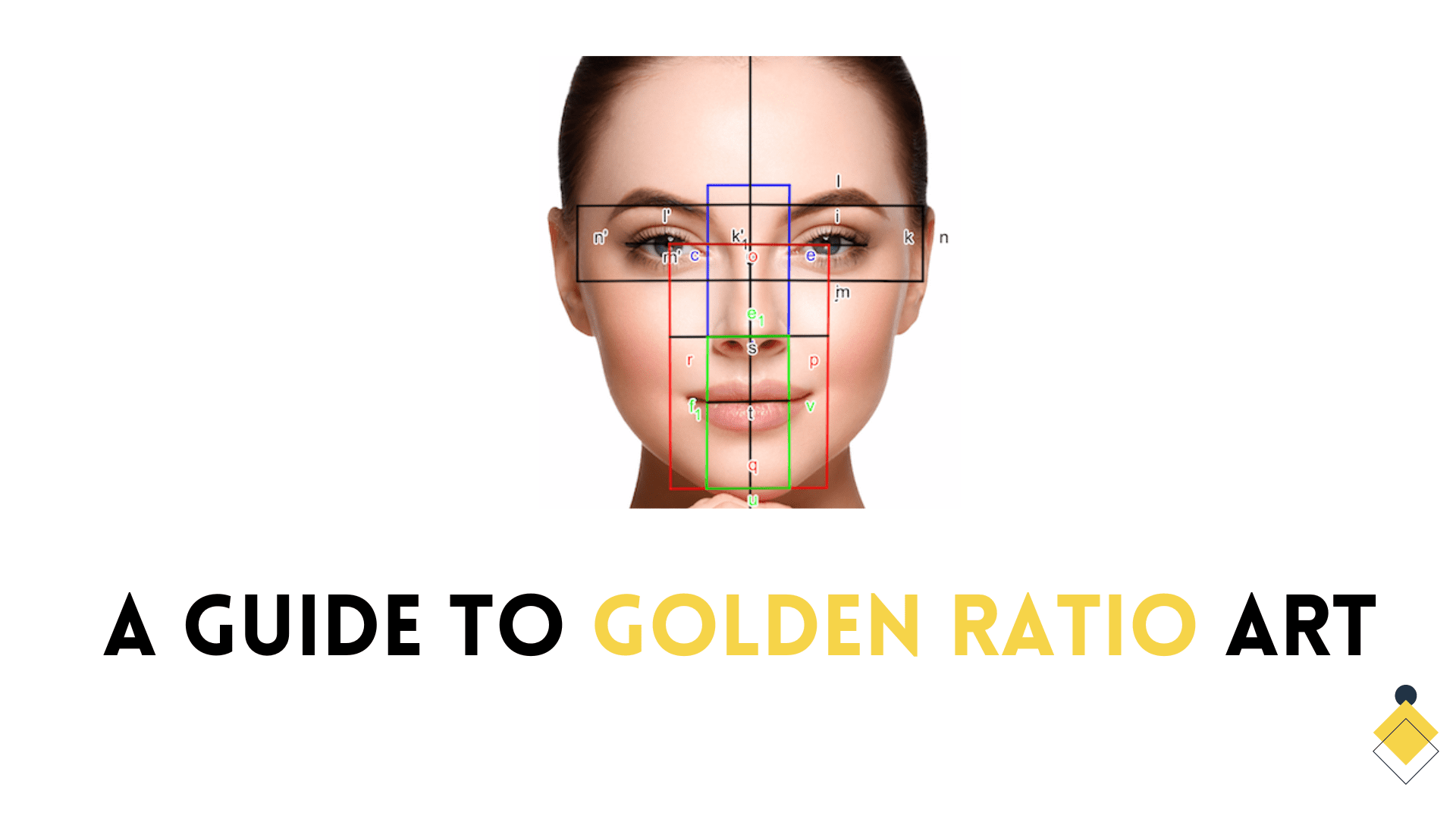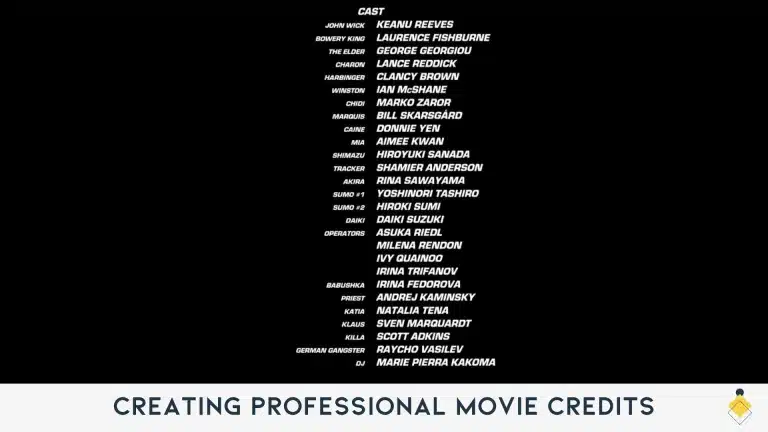Artwork following the principles of the golden ratio has an inherent sense of balance, order, and beauty. The golden ratio, also known as the golden mean or divine proportion, is a mathematical ratio of 1:1.618 that has been used by artists for thousands of years to create aesthetically pleasing compositions. Understanding and applying the golden ratio in art can help take your artwork to the next level.
The golden ratio is found throughout nature, architecture, and the human body. When used in art and design, the golden ratio helps create compositions that are balanced, harmonious, and naturally pleasing to the eye. In this article, we will explore what the golden ratio is, its origins, and how artists over the centuries have made use of the golden ratio principles in their paintings, drawings, and sculptures to achieve the perfect composition.
What is the Golden Ratio?
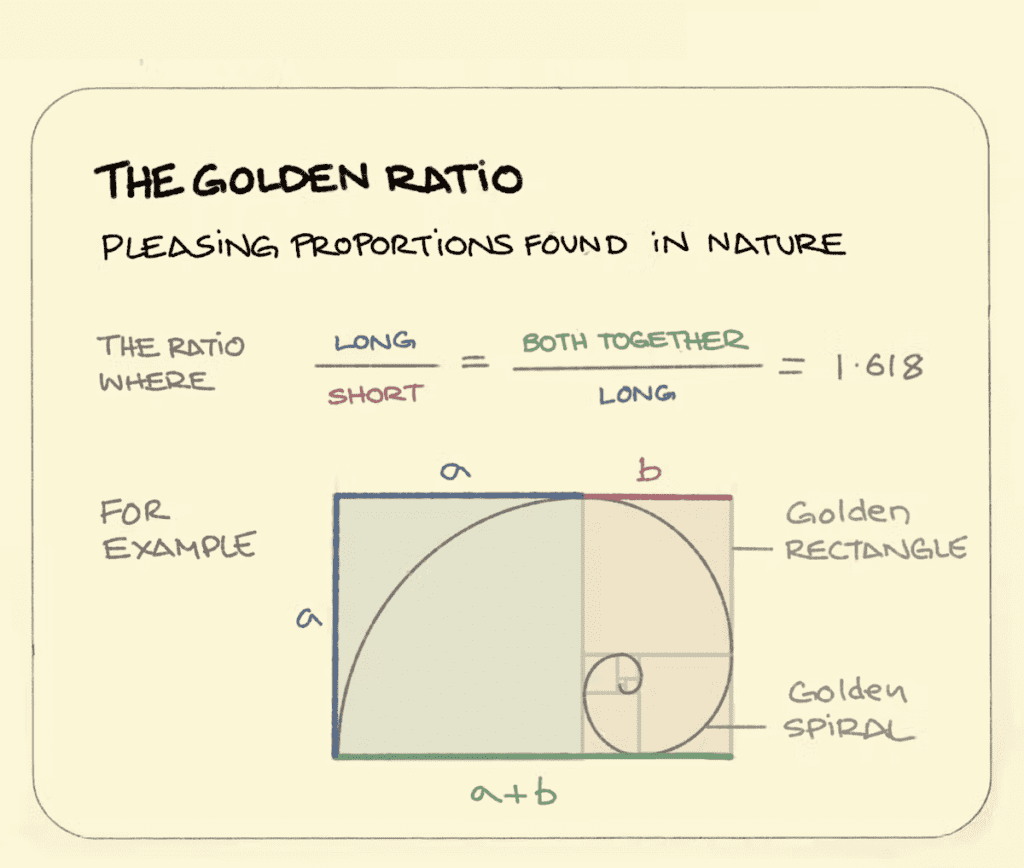
The golden ratio is a mathematical proportion defined by the ratio of 1 to 1.618, represented by the Greek letter phi. It is an irrational number, meaning its value cannot be expressed exactly as a simple fraction. The golden ratio is also called the golden section, golden mean, divine proportion, extreme and mean ratio, and the divine proportion.
The golden ratio is related to the Fibonacci sequence, a pattern of numbers where each number is the sum of the two preceding numbers (0, 1, 1, 2, 3, 5, 8, 13, 21, 34…). As the Fibonacci sequence progresses, the ratio between consecutive numbers approaches phi, the golden ratio.
When a line is divided into two parts and the whole length divided by the long part is equal to the long part divided by the short part, it is in the golden ratio proportion. Visually, this looks like a square next to a rectangle where the ratio of the rectangle’s length to width is phi.
The History and Origins of the Golden Ratio
The golden ratio has been mathematically pondered for millennia, at least since the time of Pythagoras around 500 BC. It was studied further by the ancient Greek mathematicians Euclid and Phidias. The golden ratio was first defined as the “extreme and mean ratio” in Euclid’s Elements around 300 BC.
The mathematical properties of the golden ratio were written about extensively by the ancient Greek mathematician Euclid in his book Elements around 300 BC. Euclid demonstrated geometrically that a line divided into two parts where the ratio of the whole to the larger part is the same as the ratio of the larger part to the smaller part produces the golden ratio.
In 1509, Luca Pacioli wrote a book on divine proportion called De divina proportions, exploring the mathematics behind the golden ratio. The illustrations in Pacioli’s book were drawn by Leonardo da Vinci and likely introduced the concept more widely in art composition. Pacioli called the golden ratio “the divine proportion” and this term persists today.
The golden ratio has been rediscovered and pondered throughout history by eminent mathematicians such as Leonardo Fibonacci, Johannes Kepler, and Martin Ohm. The ratio’s unique mathematical properties continue to intrigue mathematicians today.
Using the Golden Ratio in Art Composition
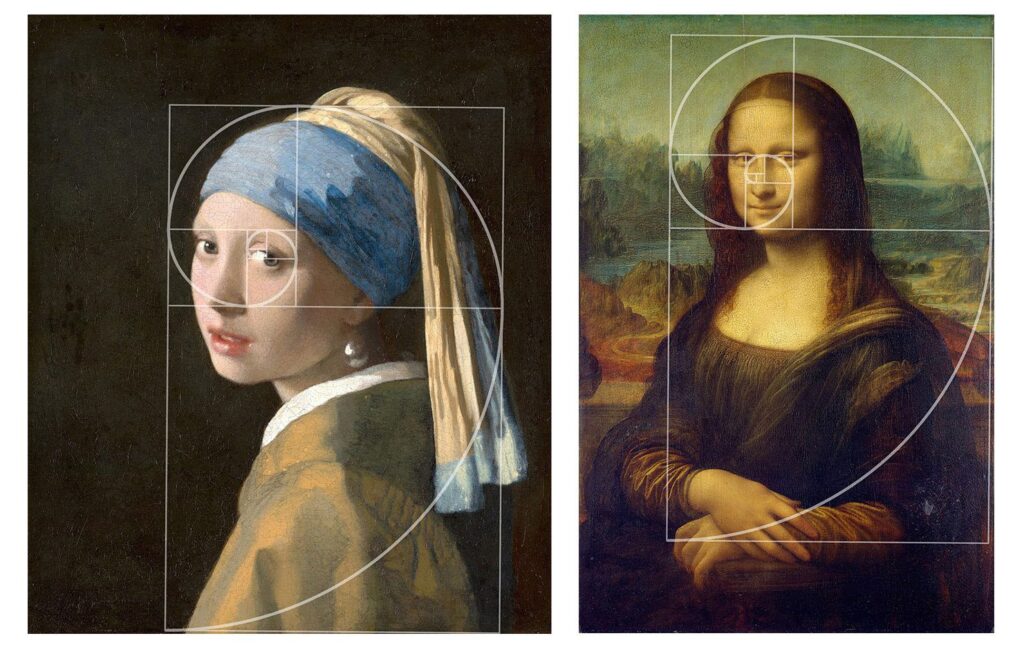
The golden ratio is a powerful compositional tool because its proportions are aesthetically pleasing to the human eye. When artworks are composed using the golden ratio, they have a natural beauty, harmony, and balance that viewers intuitively respond to.
The golden ratio provides the perfect formula for laying out the key elements of an artwork such as focal points, objects, negative space, and frames. Placing compositional elements according to the golden ratio creates compositions that are balanced and proportional. The ratio helps guide the placement of elements in an ideal way.
Artists employ a variety of techniques and tools to plan and execute golden ratio compositions. Some common methods include:
- Drawing a golden rectangle as the basis for the composition
- Using the golden spiral to map key elements
- Dividing a composition according to major golden ratio points
- Composing along the golden curve
The golden rectangle, where the ratio of the sides is the golden ratio, can provide the underlying framework. A square can be nested inside, with a golden rectangle extending outwards, creating a natural splitting point.
The golden spiral is another great composition tool. It geometrically divides spaces based on a spiraling golden ratio. The spiral can guide placement of focal objects along its curves and intersections.
Dividing up the picture plane into major horizontal and vertical lines based on golden ratio proportions provides strong guidance for element placement. Objects and areas of interest can be aligned on these division points.
Examples of the Golden Ratio in Famous Artworks
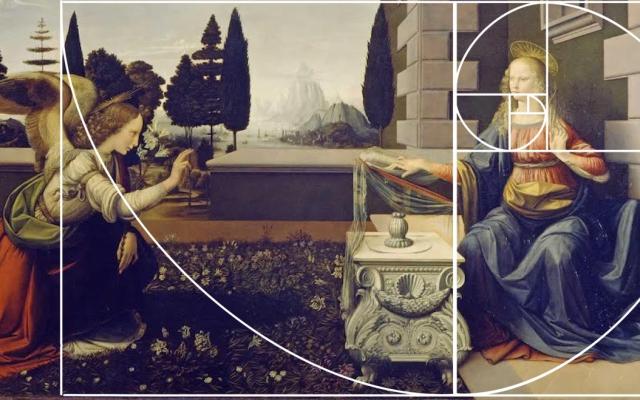
Many of history’s greatest artists intuitively used the golden ratio to compose aesthetically pleasing, balanced artworks that stand the test of time. Tracing the golden ratio overtop paintings reveals its timeless presence.
Leonardo da Vinci incorporated the golden ratio extensively in his artworks and was likely influenced by Pacioli’s book on the divine proportion. Da Vinci’s sketches indicate he purposefully employed the golden ratio. In his famous painting Last Supper, Christ’s head aligns with the golden ratio, and the room’s architecture follows it.
Salvador Dali was inspired by the golden ratio and mathematics, calling it the “Divine Proportion.” In his Sacrament of the Last Supper painting, the ascending shape precisely follows the golden spiral. Dali planned his compositions meticulously and incorporated mathematical ratios to create balance and intrigue.
Dutch artist Piet Mondrian utilized the golden ratio in his geometric, abstract compositions through the positioning of vertical and horizontal black lines against white backgrounds. Mondrian layered perpendicular lines and rectangles together in compositions adhering to the golden ratio.
The famed Parthenon temple in Athens widely incorporates the golden ratio in its façade and layout. The entire temple’s width to height forms a golden rectangle. Columns, frames, and other architectural features align at golden ratio points.
Contemporary Swiss photographer Robert Furrer consciously composes his landscape and architectural photos based on the golden ratio and Fibonacci spiral overlays. The organic shapes, patterns, and lines in nature intuitively adhere to these mathematical ratios.
Tips for Using the Golden Ratio in Your Art
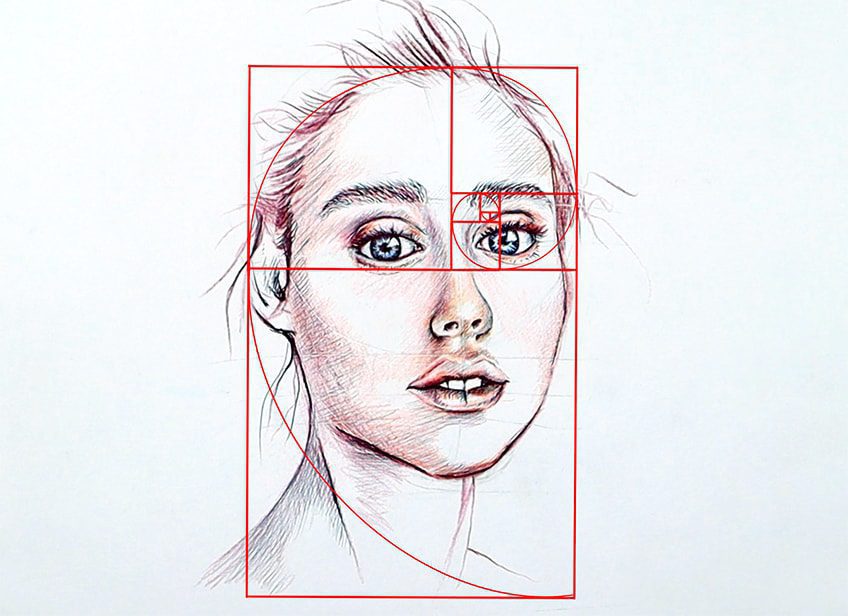
Here are some tips for practically applying the golden ratio in your own artwork and photography:
- Use the golden rectangle as a template for your composition’s dimensions
- Plan key objects and areas of interest along the golden spiral
- Align compositional elements with golden ratio horizontal and vertical divide points
- Position the focal point or subject’s eye at a major golden ratio intersection
- Frame the subject within an inverted golden triangle for powerful compositions
- Compose along the golden curve for organic, aesthetically balanced scenes
Taking the time to thoughtfully compose your artwork using the golden ratio as a guide can elevate your work to be more balanced, harmonious, and appealing. Experiment with overlaying the golden spiral and dividing by the golden ratio to see what hidden compositional gems it reveals in your existing or planned artwork. With practice, your creative eye will start intuitively composing in line with this divine proportion.
The golden ratio truly is a unique mathematical gift and secret weapon for artists across all mediums. Master painters like Da Vinci and Dali knew this instinctively. Understanding how to harness the golden ratio gives us greater artistic capability to craft artwork that will resonate through the ages.
FAQ – Golden Ratio Art
To apply the golden ratio in art, you need to understand the golden number, which is approximately 1.618. This ratio can be found in the proportions of the golden rectangle. Essentially, if you divide the longer side of a rectangle by the shorter, you should get the golden number. By following the golden ratio in your composition, whether it be paintings or architecture, you can create a sense of balance and harmony that is visually pleasing.
A golden rectangle is a rectangle whose side lengths follow the golden ratio. That means if you were to divide the long side by the short side, you’d get the “divine proportion,” or approximately 1.618. Many artists and architects have used the exact proportions of the golden rectangle to create aesthetically pleasing designs and artworks.
Leonardo da Vinci is another prominent artist known to use the golden ratio in his artworks. The ratio is illustrated by Leonardo da Vinci in his drawing, “Vitruvian Man,” as well as in paintings like the “Last Supper.” In these works, da Vinci applied the golden proportion to create pivot points in his art, providing an aesthetic harmony to the viewer’s eye.
The golden spiral is a curved line that gets broader by a factor of the golden ratio for every quarter turn it makes. This spiral can be seen in natural phenomena and many artists have used it to structure their compositions. A golden spiral follows the golden ratio and when applied in art, it draws the viewer’s eye to the most important elements of the piece and adds symmetry.
The Fibonacci sequence is a series of numbers where each number is the sum of the two preceding ones, usually starting with 0 and 1. The interesting thing about this sequence is that it approximates the golden ratio. When you divide each number by the previous number, the result gets closer and closer to the golden number.
Piet Mondrian was an artist known for his style that consisted of using primary colors within a grid of black lines and white spaces. He is understood to have used the golden ratio to create balance in his works. His use of squares and rectangles in his compositions often follow the golden ratio, creating visual harmony.
Finding the golden ratio in art can be as simple as spotting a rectangle that could be divided into squares, and the remaining rectangle will also follow the golden ratio. Alternately, in more complex pieces like the “Last Supper” by Leonardo da Vinci, you can look for pivot points in the painting that act as the focal point. Mathematically, if the dimensions of a work of art are divided and the result is close to 1.618, it might be following the golden ratio.
Absolutely! Start with a simple golden rectangle. Once you’ve created that using the golden ratio, you can use the longer dimension to create a square, leaving a smaller golden rectangle. You can continue this process to create a spiral. This process can guide your compositions. For example, placing the main subject in a rectangle and filling the rest with supportive elements can help your work follow the golden ratio.
The rule of thirds is a simpler version of the golden ratio. It’s a type of composition where an image is divided into thirds, horizontally and vertically, creating a grid. Place your main subjects where the lines intersect can create balance. This is essentially an easy-to-use shortcut to the golden ratio, but it doesn’t offer the exact “extreme and mean ratio” that the golden ratio does. But, it’s a start and can surely add a visual appeal to your composition.
Absolutely! The golden ratio has been used extensively in architecture, design, and even music. In nature, the proportions of the golden ratio can be found everywhere from the pattern of pine cones, to the position of branches along a tree’s stem. In terms of human body, the golden ratio can be found in the proportions of the face and body. The applications are endless!

